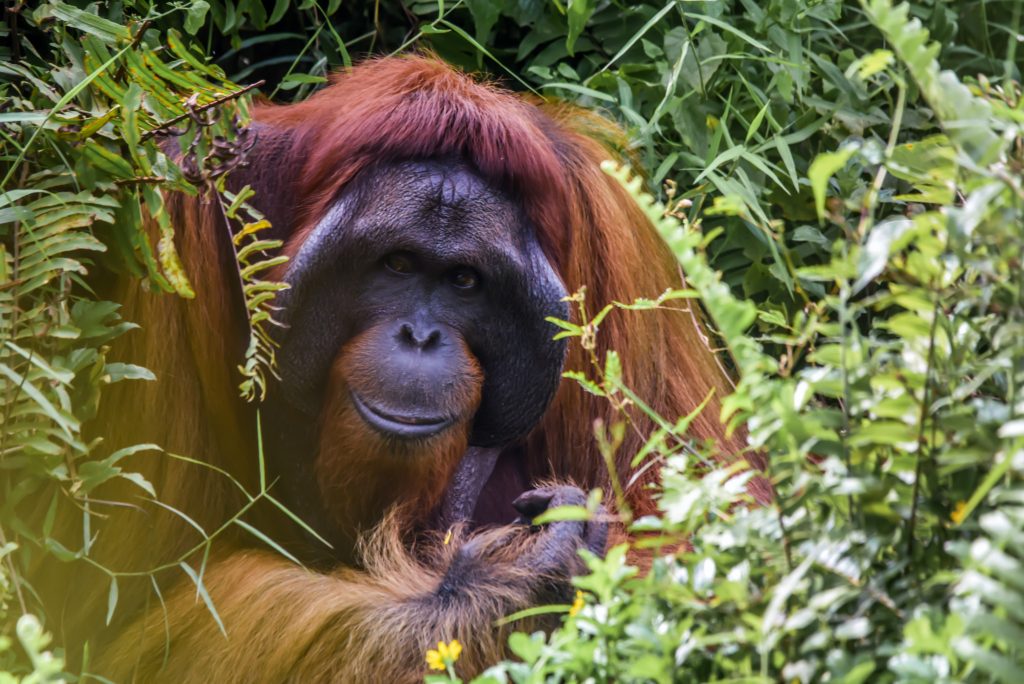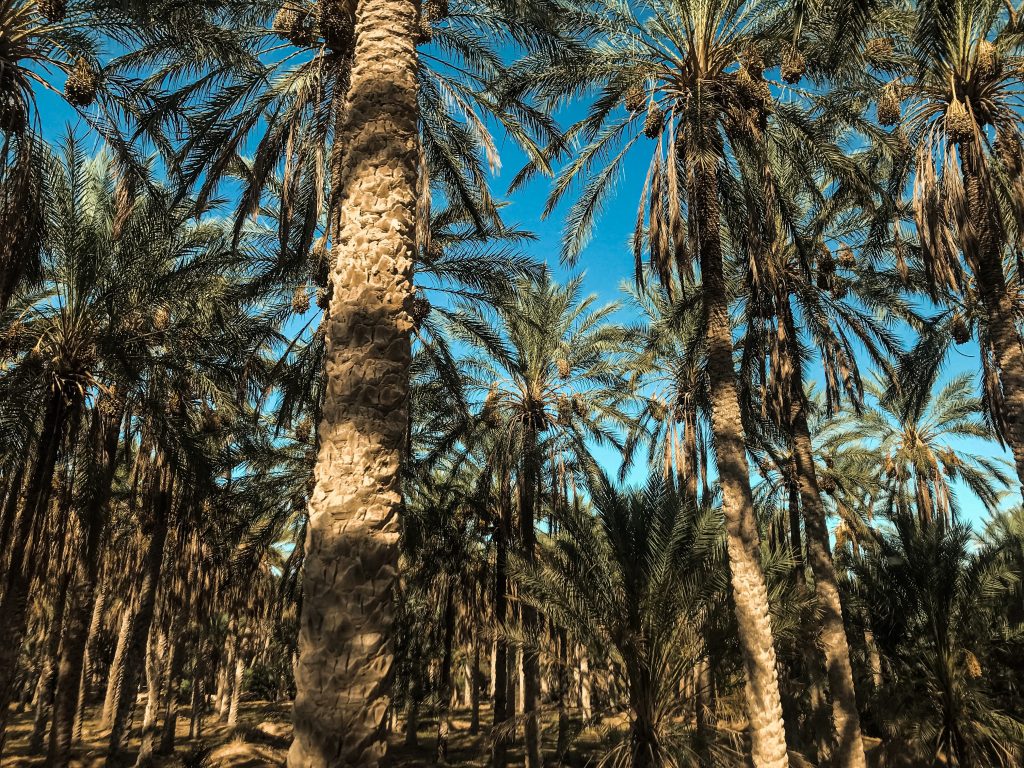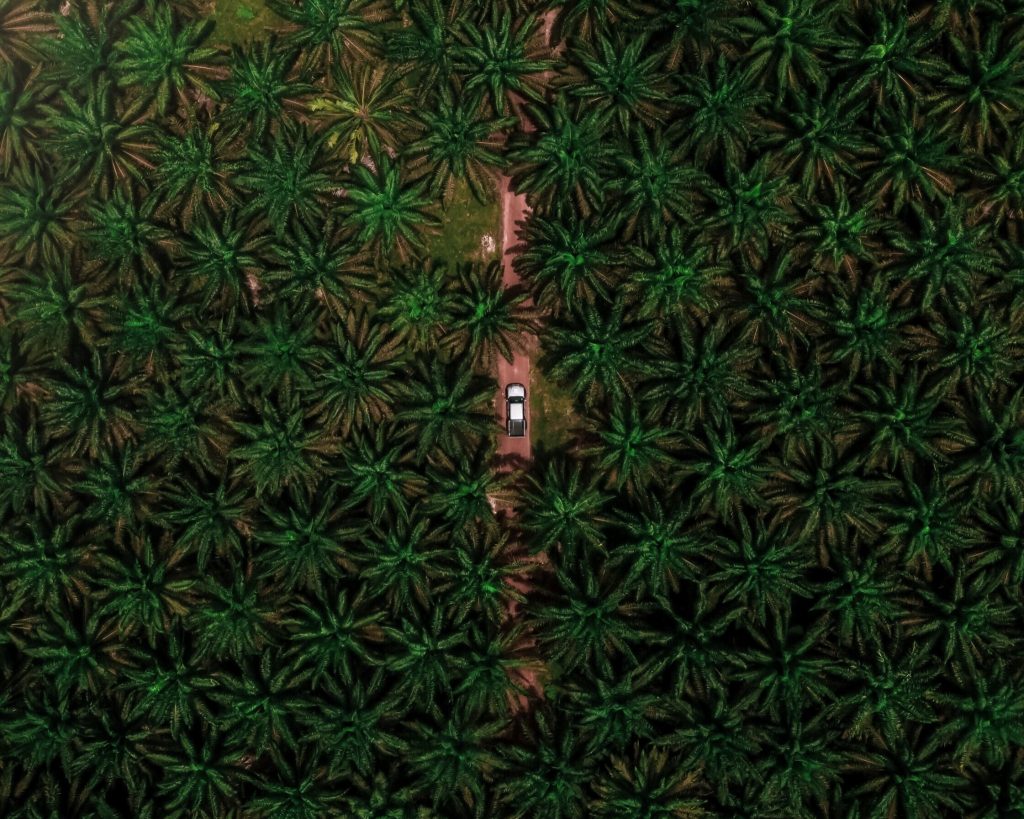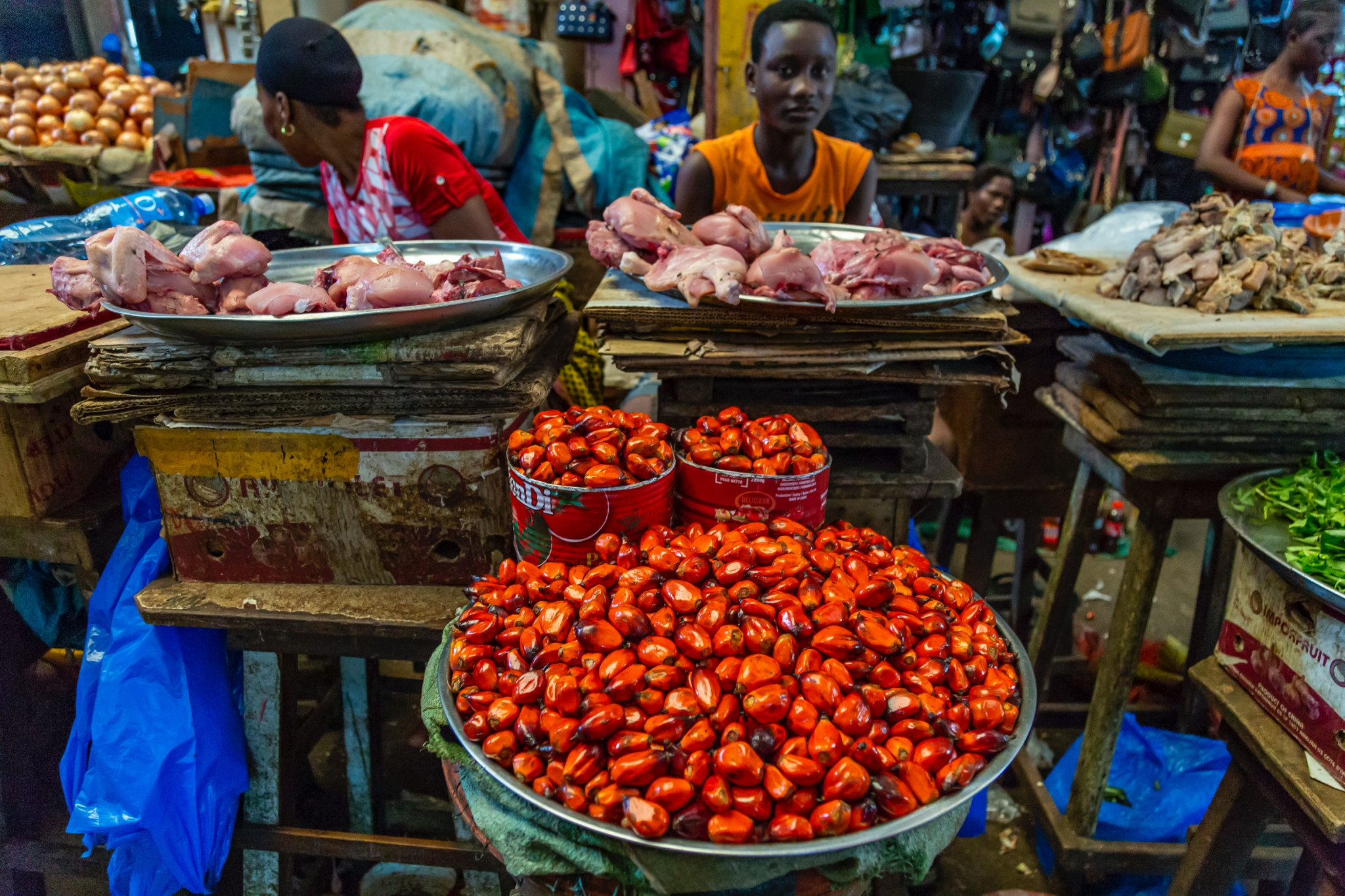OR: I’m going to make you care about palm oil in the next 4 minutes, even though you likely don’t know what it is, as I didn’t three days ago, and now I’m an expert and you will be too, but that’s too long a title so instead you just get What’s the Deal with Palm Oil?
PART 1: What Even is Palm Oil?
Super easy: palm oil is an edible vegetable oil that originates in the fruit of oil palm trees. Two types of oil are made from these fruits: the crude, plain palm oil from the flesh of the fruit, and palm kernel oil from the crushed stone in the centre.
It’s made easily and efficiently, producing more oil per land area than any other vegetable oil crop, such as coconut, sunflower or soybean oil. To create the same amount of those oils, you’d need between 4 and 10 times more land than you would palm. Plus, with the fact that palm oil supplies approximately 40% of the world’s vegetable oil needs on under 6% of the land used to produce all vegetable oils, palm oil delivers the biggest bang for your buck.
And it’s in everything. Newspaper, lipstick, soap, food. Pizza dough, ice cream, shampoo, instant noodles. Palm oil creates the smooth and shiny appearance in a bar of chocolate. It goes semi-solid at room temperature and so is easy and cheap to be used in bread. It’s free of trans fats and so perfect to go in margarine. In the UK, we use sunflower and olive oil, but in many Asian and African countries, palm oil is their go-to.
It can keep sandwich spreads spreadable, give products a longer shelf life because it’s resistant to oxidation, provides fried foods with a crispy and crunchy texture. Palm oil is the holy grail of oils.
So, what’s the deal with it?

PART 2: The Deal
There’s this poignant moment in David Attenborough’s A Life on Our Planet in which he visits Malaysia in 1989, by which point there were 2 million hectares of oil palm plantation. He spent quite some time travelling along a river, searching for proboscis monkeys. He believed all was well with the forest during filming, but only afterwards, flying back over the area, did he see the forest for how it truly was: only a miniscule strip of untamed nature left, fringing the water, and row after row of oil palm trees.
Put simply, the deal with palm oil is this: palm oil = deforestation. Deforestation = bad.
The longer, more nuanced version, is this:
Palm oil is a major driver of the deforestation of some of the world’s most biodiverse forests, threatening the lives of already endangered species like pygmy elephants, Sumatran rhinos and orangutans through the destruction of their habitats. Around 90% of the world’s oil palm trees are grown on a few islands in Malaysia and Indonesia, and those islands are also home to some of the most biodiverse tropical forests found on Earth. These large, single-crop oil palm plantations are situated in 44 countries, however, leading to the displacement of forests across Asia, Latin America and West Africa.
Vegetation obstructing the development of palm oil estates is often cleared by burning, releasing smoke and carbon dioxide into the atmosphere and polluting the air in the process. The carbon-rich peat soils natural to the forests (also known as “carbon sinks”) are then drained and converted, throwing out an extraordinary amount of greenhouse gases into the atmosphere, and erosion in this ground occurs by inappropriate tree planting arrangements across the plantation. Plus, a singular palm oil mill generates 2.5 metric tons of sewage for every metric ton of palm oil it produces; polluting waters that flow downstream and are relied upon by both animals and communities.
Finally, because of course that’s not all: let’s not forget the continuing exploitation of workers and child labour used at these plantations. Amnesty International reported on the human rights abuses discovered on plantations in Indonesia back in 2016, with more labour abuses reported in 2020 by APNews and The Guardian.
So, like, what do we do? Boycott?

PART 3: Why We’re Not Boycotting
Well, we are boycotting, but we’re not boycotting the product as a whole, as that would be almost impossible in this day and age.
See, there’s a way to create palm oil sustainably, and that shouldn’t be discounted.
In 2004, The Roundtable on Sustainable Palm Oil (RSPO) was formed as a response to growing concerns about the impacts that palm oil was having on the environment and communities local to the plantations. Millions of independent farmers depend on producing palm oil for their livelihoods, and when entire regional economies are built around a specific product (especially one as versatile as palm oil), it can be disastrous to the communities relying on that economy to suddenly take away their main source of income without immediate and meaningful compensation and alternate employment.
So the goal of the RSPO is ultimately to allow these communities to gain meaningful employment and income while ensuring the process of making palm oil is more sustainable for the environment and people who live there. The RSPO encourages companies to set robust policies to remove deforestation, conversion of peatlands, and human rights abuses from their supply chains, as well as use only RSPO-certified palm oil in their products. The sourcing of palm oil in products should also be transparent to ensure that consumers know who they’re buying from and where their products have been produced.
The RSPO is the global standard for the sustainable production of palm oil. Following these standards allows growers to protect the environment and the local communities who depend on the crop. RSPO-certified products are those that adhere to their guidelines: the companies involved will not take part in deforestation, peat development or exploitation of their workers, and will develop responsibly in the future.

PART 4: So, That’s the Deal with Palm Oil
As for how this relates to the UK – in 2012, our government recognised that we were part of the problem and set a commitment to have 100% of the palm oil used in the UK to be from sustainable sources that don’t harm the environment or people by 2020. By 2018, 77% of the total palm oil imports to the UK were sustainable.
Some products will still be using unsustainably sourced palm oil, so keep an eye out as it’s such a pervasive product that it’s hard to avoid entirely. But RSPO-certified products do exist in the world, and you can use the member searching function on their website to check your regularly-used brands, and the product searching function to find which products stick the RSPO label on the side.
In the end, we do with this like we do with everything else: the best we can.
Further Reading and Sources:
WWF 8 Things to Know About Palm Oil
How Palm Oil Became the World’s Most Hated, Most Used Fat Source
Oil Palm: A Global History, by Jonathan E. Robins
By Bethany Climpson, Sustainability Engagement Assistant
 Sustainability
Sustainability Bethany Climpson
Bethany Climpson 1489
1489


